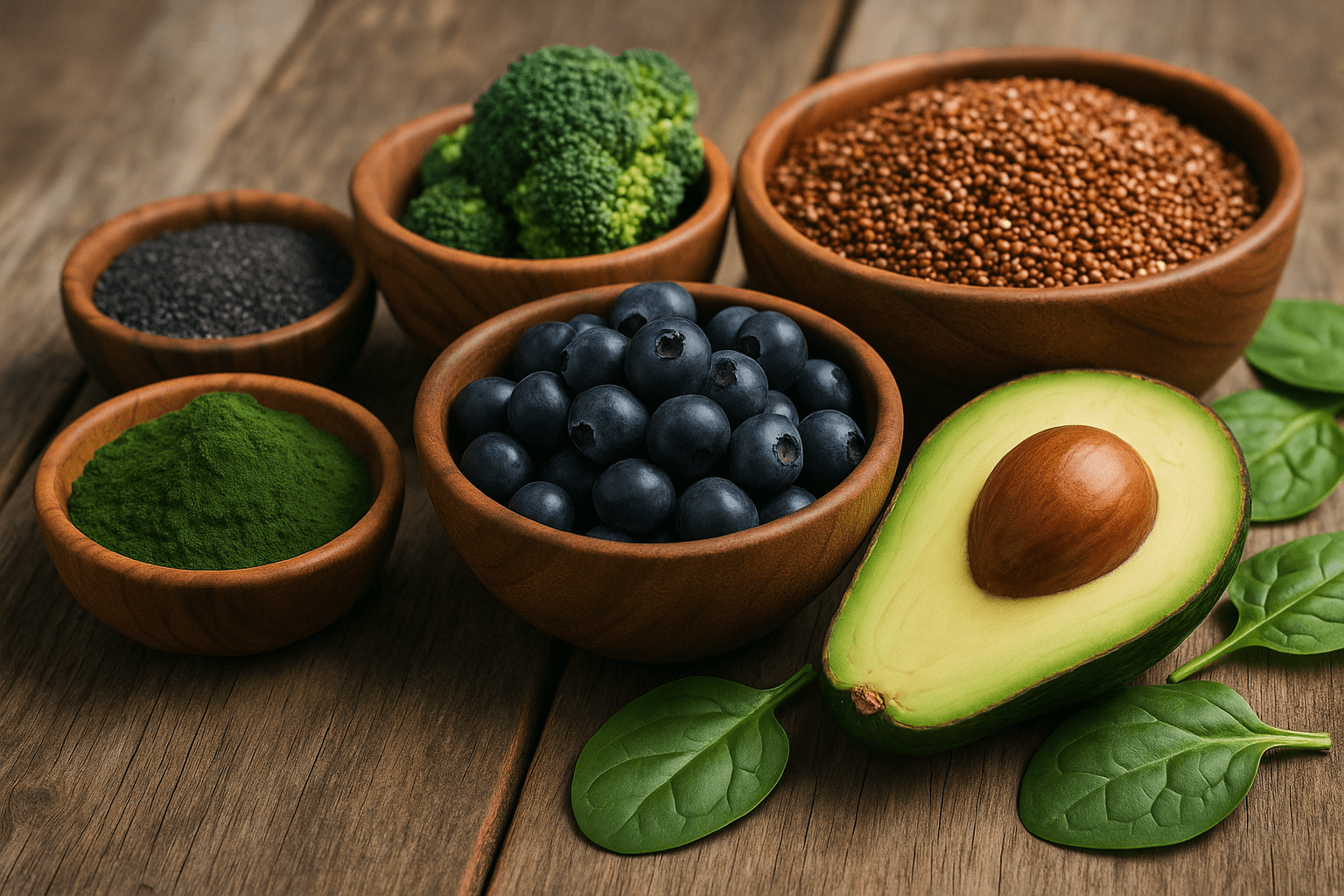Against the backdrop of fad diets with contradictory nutritional advice, the term “Superfoods” is used with equally bold and intriguing promise. Imagine foods so rich in design that they nourish the body while helping it fight diseases, maintain cognitive functions, and extend longevity. These superfoods, ranging from kale to blueberries, quinoa to turmeric, are well and truly household names in kitchens that cherish health, and rightly so.
This blog delves into the why of superfoods, their benefits, the integration of these foods into a lifestyle, and what the future holds for this nutritional category.
Why Do Superfoods Matter?
Superfoods are not some marketing ploy- they are some vitamin- and mineral-rich ingredients that offer a concentrated source of antioxidants and healthy fats despite their calorie content. Foods from this group, when combined with a healthy diet and physical activity, are said to improve one’s health outcomes according to the Harvard T.H. Chan School of Public Health.
In contrast to these processed health fads, superfoods are whole, often plant-based ingredients that reduce inflammation, increase immunity, and support cardiovascular and mental health. In the face of this growing tendency towards chronic diseases like obesity, diabetes, and cardiovascular conditions worldwide, the position of superfoods in the preventative care arena is more relevant than ever.
Key Benefits of Superfoods
1. Rich in AntioxidantsAntioxidants fight oxidative stress that results from processes causing premature aging, cardiac conditions, and cancers. Berries, dark chocolate, and green tea, being full of flavonoids and polyphenols, activate a chain reaction that destroys free radicals.
2. Improve Heart Health
Omega-3 fatty acids, found in foods like salmon, chia seeds, and walnuts, lower LDL cholesterol, decrease blood pressure, and improve arterial function.
3. Foster Good Bacteria in the Gut
Supernatural probiotic foods such as kimchi, kefir, and yogurt can keep gut bacteria balanced and support digestion.
4. Promote Brain Health by Itself
Leafy greens, turmeric-curcumin, and fatty fish all improve memory and focus, therefore lowering the risk of cognitive decline.
5. Aid in Blood Sugar Control
Cinnamon, legumes, and whole grains assist in the stabilization of blood sugar and, therefore, are suitable for those persons dealing with diabetes or insulin resistance.
How to Work Superfoods into Your Diet: A Step-by-Step Guide
1. Start with One MealAdd spinach to the smoothie you whip up in the morning, put chia seeds on yogurt, or substitute white rice with quinoa for the evening meal.
2. Prepared Balanced Plates
Fill half your plate with fruits and vegetables in season, one-quarter with lean protein, and the rest with whole grains.
3. Continue with Superfood Snacks
Utilize roasted chickpeas, mixed nuts, or dried berries as healthy alternatives to their processed counterparts.
4. Experiment with Recipes
Try golden milk with turmeric, homemade açai bowls, or salmon-stuffed avocados to keep things exciting.
5. Shop Smart
Buy in bulk, freeze portions of berries or greens, and choose organic when possible to reduce pesticide intake.
Real-World Case Study: From Burnout to Balance
Name: Samantha, 38
Profession: Software engineer
Challenge: Chronic fatigue, bad focus, and recurring colds
Approach: She was guided by a nutritionist to add superfoods such as blueberries, salmon, and matcha green tea to her nutrition. Samantha started eating less processed food and started batch cooking weekly.
Result: Truly amazed, she noted that, within two months, better energy and concentration levels came with fewer days lost to sickness. Bloodwork revealed a downgraded state of inflammation, and then she stuck to those changes long-term.
“I didn’t believe food could change how I felt so dramatically until I experienced it firsthand.”
Actionable Tips and Advice
- Rotate Your Superfoods: Do not eat the same superfood every day. Variety is better for covering a wider nutritional range.
- Paired Food: Turmeric used with black pepper has been proven to increase curcumin absorption. Vitamin C-rich foods combined with iron sources work best to enhance uptake.
- Hydrate: Superfoods are the most efficient when your body is well hydrated; water also assists in the transport of nutrients and digestion.
- Allergy Watch: Some superfoods, like nuts or soy, can promote sensitivities. New foods should be introduced slowly.
Mistakes That Should Be Avoided
- Overdoing One Food: Eating solely kale or goji berries while taking vitamins will not provide all the necessary nutrients. Balance is a key.
- Ignore Portion Sizes: Superfoods do have calories. Too much of anything, even good food, can cause weight gain.
- Thinking of it as a Quick Fix: Superfoods are for long-term health consideration, not instant remedy.
- Getting Carried Away with Unsubstantiated Claims: Not every hot seed or powder is science-backed. Go to the sources of evidence.
Future in Superfood Innovations
- Functional Food Integration
There will be more gastronomic products fortified with superfood ingredients, such as protein bars with spirulina or smoothies laced with adaptogens, say, for instance.
- Personalized Nutrition Plans
Basing themselves on the justice of algorithms, diet apps like Nutrigenomix and DayTwo propose superfood suggestions according to your DNA and microbiome.
- Sustainable Superfoods
Seaweed, together with moringa and cricket flour are trend for nutrition plus less environmental impact.
- Superfood Skincare
Brands like Youth to the People are using kale and spinach in skin serums-linking internal and external wellness through food-based formulas.
Conclusion: Superfoods Are Not Just a Trend—They’re a Lifestyle
Superfoods or the center of modernistic superstations: the gray market for panacea. It has basically become an increasingly parallel line from conscious nutrition to something that nourishes the body and lasts long. Science is gifting legitimacy to these foods, with benefits ranging from cardiovascular improvements, brain working, intestinal harmony, to immune support.
Cooking and eating these superfoods while progressing simultaneously nurture the other side of the well-being nature of a being: easy, tasty, and effortless.
Now, if you’re wondering how to spark your superfood journey, check out your cabinets, try a new superfood this week, and sign up for our wellness newsletter for weekly recipes and expert advice.




